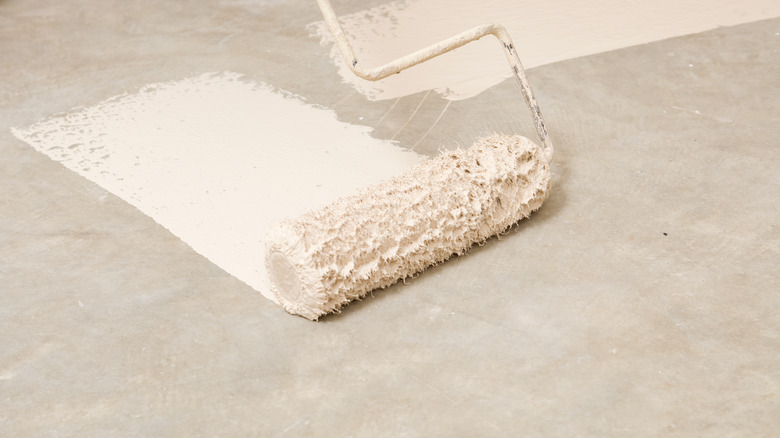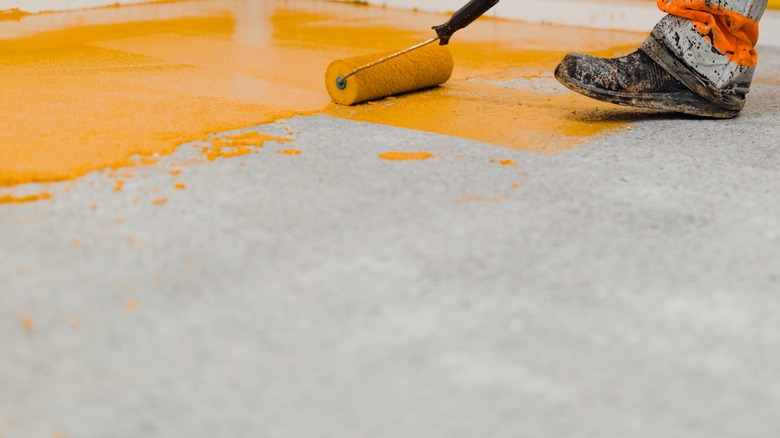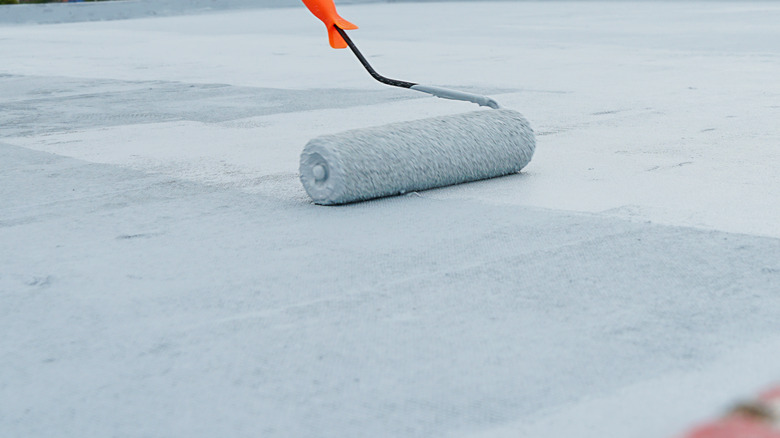Avoid This Mistake When Painting Concrete Floors For Long-Lasting Results
Concrete floors are often found in basements, garages, or outside areas like patios. They are a durable, low-maintenance flooring option that is great for spaces with a lot of wear and tear. When concrete floors are coated and sealed, they can even be resistant to water, certain stains, and fire. The many benefits of concrete flooring make it the best choice for certain areas of a home. However, one of the negatives of the flooring material is its lifeless appearance. This can easily be solved by coating it with a paint color of your choice. Ensuring you paint concrete floors in an environment with the proper temperature and humidity is vital.
One of the many mistakes nearly everyone makes when painting concrete floors is not considering temperature and humidity. This is unfortunate because it can make a drastic difference in the outcome of your project. Concrete floors are porous and very absorbent unless they are sealed. As a result, you should make sure that you paint them in the right environment so that the coating sets properly.
Paint your concrete floors in the right temperature and humidity levels
When painting concrete floors, your floor should be no less than 55 degrees Fahrenheit, according to Anderson Painting. The air in the room or outdoor space around the floors should be between 60 and 85 degrees Fahrenheit. As for your humidity levels, they should be around 35%. Keep in mind that the exact temperature and humidity level you need will depend on the type of paint you select. Read your paint's label to check for guidance.
You can use a hygrometer to determine the exact humidity levels of your space. Once you have a number, you might discover that the area is either too humid or too dry to be able to paint your concrete floors. In this case, you can use either a humidifier or a dehumidifier to attempt to get your room to the necessary humidity level.
If you know that you will be painting concrete floors outside, plan so that you can complete the project in the proper temperatures. Depending on where you live, the more intense winter and summer months might not be the best time to paint. Block out a time when you expect ideal temperatures and plan your concrete floor painting project around those dates.
The benefits of painting concrete floors
Now that you know the temperature and humidity levels you need to be able to paint your concrete floors properly, let's dive into the many benefits of layering paint over the popular flooring material. First, bare concrete floors can be a breeding ground for moisture and mildew. They are porous and hold onto liquids that seep into them. Once the concrete is painted and sealed, it is more difficult for moisture to cause this kind of damage as it creates a protective layer.
Painted concrete floors are also easier to clean as stain-causing substances have a harder time seeping into the surface. Transforming concrete floors from plain and grey to a color of your choice that complements your living space can even increase the resale value of your home. Bare floors often give rooms an unfinished look. Painted concrete floors may make a space more homey and inviting, so it is no surprise that they are more attractive to potential home buyers.


